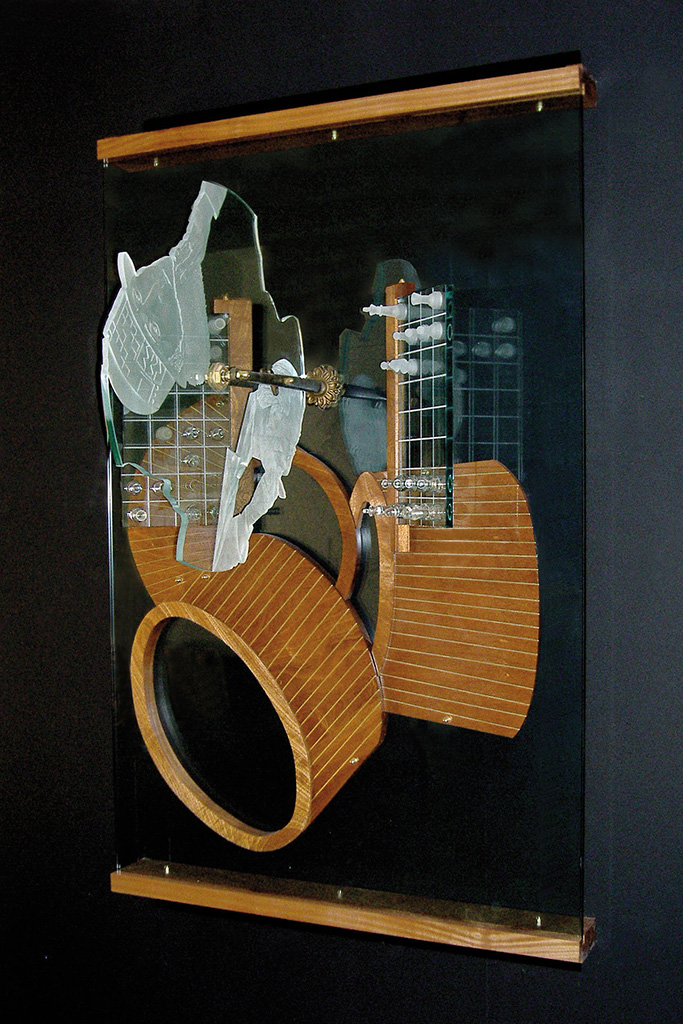Provacateur
Materials Sandblasted glass, cast glass, bronze and wood
Duchamp’s career began in a normal fashion as a painter starting in 1908. His early paintings were in the classical style of the period, but he soon was taken with cubism and his painting “Nude descending a staircase” is a classic of that genre. In 1913 he startled the art world with the first of his series of “readymade “objects as works of art, a bicycle wheel mounted on a high stool. However, his life as a person who truly provoked outcries in the artistic community, began with his showing of a urinal signed R. Mutt at the Armory Show of 1917 in New York.
2013 marked the 100th anniversary of that first “readymade” so it is only fitting that I used a version of this bicycle wheel to help define this portrait. Engraved on that wheel are two images of Duchamp, one from his dada period in 1924 when he was photographed by Man Ray dressed as his alter ego, Rrose Sélavy, and the other his more classic persona, suave and dapper. There also appears two cutout self-portraits taken from a work done in lead. To further characterize this curious personality, I have used as a central element, the chocolate grinder from one of his most famous pieces “the Large Glass” or “The Bride Stripped Bare by her Bachelors, Even” which is in the Philadelphia Museum of Art. This creation on two panels of glass describes the erotic encounter between the bride and her nine bachelors.
In the early 1920’s he took up chess as a serious pursuit and he “formally gave up art” in the 1930’s to play the game on an International level becoming champion of France and vice-champion of Europe. After a period of time he began again to make some pieces completely in private. Upon his death in 1968 it was revealed that he had been working in total secrecy for almost 20 years on his last great work “Etant donnés” which translates as “Considering”. It has been said that Marcel Duchamp was certainly the father of the avant-garde and the predecessor of Yves Klein and such contemporary artists as Jeff Koons.
